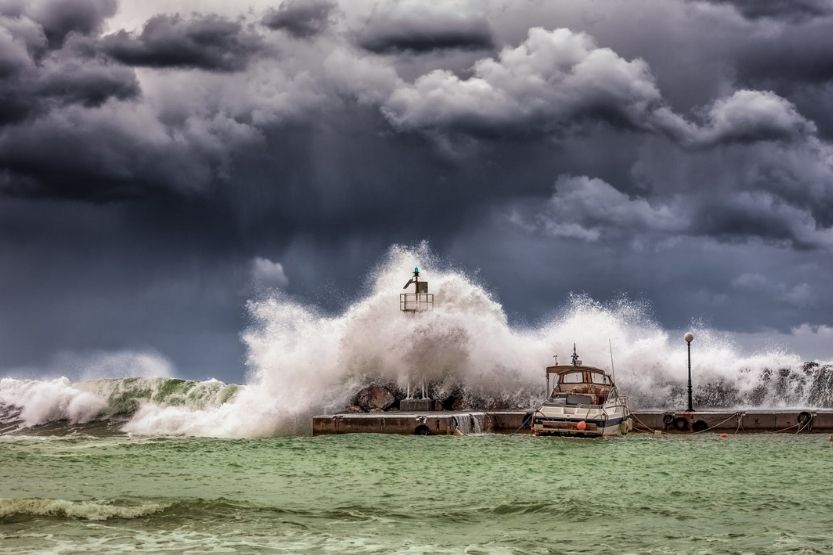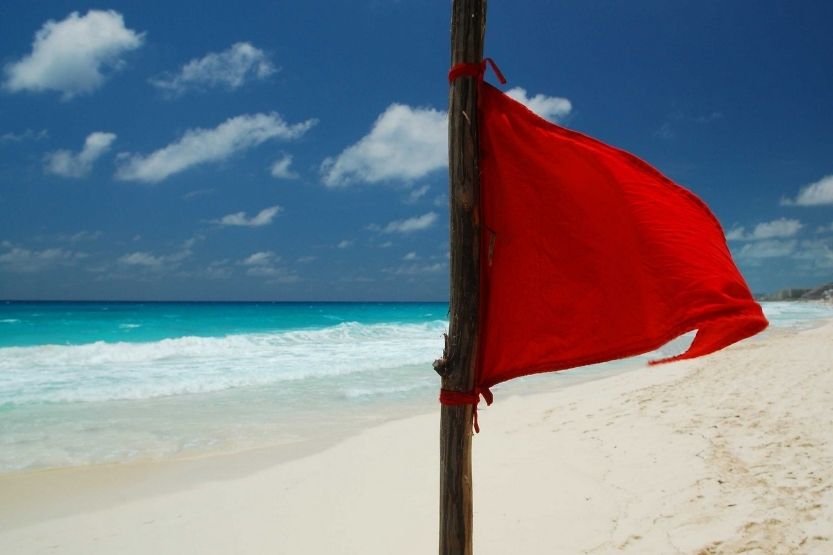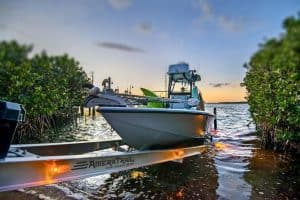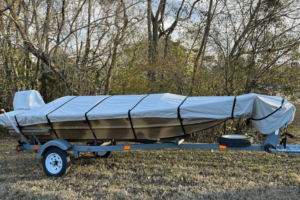One of the U.S. National Weather Service tasks is to issue warnings and forecasts for various weather and water hazards. One of these warnings is called “small craft advisory.” What is a small craft advisory?
A “small craft advisory” is a type of wind warning issued by the U.S. National Weather Service. It is issued when sustained wind speeds or frequent gusts have reached 20 to 33 knots. This is also issued when seas or waves have reached 4 feet or more.
Read on to learn more about “small craft advisory” and the other types of weather warnings.
What Is a Small Craft Advisory?

A “small craft advisory” refers to a type of wind warning issued by the U.S. National Weather Service. It is issued when sustained wind speeds or frequent gusts have reached 20 to 33 knots. A small craft advisory is also issued when seas or waves have reached 4 feet or more.
When winds have reached dangerous speeds, the U.S. National Weather Service issues a small craft advisory. The sustained wind speeds governing a Small Craft Advisory highly depend on the location or geographical areas. However, the speeds are generally between 20 and 30 knots.
The U.S. National Weather Service can also issue this type of advisory for other types of hazardous conditions. These include the sea and lake ice. And boaters should take the necessary safety precautions when they issued this advisory.
Small Craft Advisory Boat Size
The U.S. National Weather Service does not specify the boat size covered by the Small Craft Advisory. But instead, it must be understood to be any vessel that may be adversely affected by the weather conditions of a Small Craft Advisory.
If you’re not sure what constitutes a Small Craft Advisory, there are other factors you can consider. One of the most important factors is the experience of the captain or the vessel operator. Other important factors include the following:
- Seaworthiness of the vessel,
- Its overall size, and
- Vessel type.
In case of severe weather conditions, the warning refers to a Special Marine Warning. Such a warning indicates the possibility of experiencing hazardous weather conditions that generally last for up to two hours.
The weather conditions also produce sustained marine thunderstorm winds or associated gusts of 39 mph (34 knots) or higher. There can be potential hail, squall lines, and waterspouts.
Multi-tier Concept for Forecasting Hazardous Weather
The small craft advisory is one part of the multi-tier concept for forecasting bad weather. The National Weather Service of the United States developed the multi-tier concept for forecasting hazardous weather.
It consists of the following:
- Outlook
- Watch
- Warning
- Weather Advisory
- Small Craft Advisory
1. Outlook
The National Weather Service of the United States issues an Outlook to inform people on the possible occurrence of hazardous weather or hydrologic events. Expect this to happen over the next several days from the time they issued the Outlook.
2. Watch
If the risk increases significantly, the National Weather Service issues a Watch advisory. They give this even if the occurrence, timing, and location are still unknown.
The U.S. National Weather Service provides an adequate lead time for people to prepare by issuing a Watch. That way, people will establish a plan of action if there’s a threat of a storm.
They also advise them to listen for more weather updates. This is important for those on a business trip, vacation, or anywhere else far from their home.
3. Warning
If hazardous weather or a hydrologic event occurs or will most likely occur, the U.S. National Weather Service will issue a Warning. A warning indicates that the weather condition poses a threat to life or property.
In case there’s a warning in your area, you and all others who are in the path of the storm need to take protective action. For marine forecasts, a Warning indicates that the hazardous weather condition may occur within 12 hours.
4. Weather Advisory
If U.S. National Weather Service gave a Weather Advisory, it means that there’s a hazardous weather condition occurring or will most likely occur soon. However, expect this weather condition as less serious compared to those that would warrant a Warning.
5. Small Craft Advisory
Every time weather conditions in the coastal waters or Great Lakes reach certain thresholds, the U.S. National Weather Service issues a Small Craft Advisory. These locally defined thresholds may include waves, winds, and even ice. Once they issued this type of advisory, you can expect changes in weather conditions within 24 hours.
Again, the term “small craft” does not have a precise definition. Its interpretation is left within the discretion of the vessel operator. It must not be literally interpreted as the size of the vessel only. But other factors should be taken into consideration, including seaworthiness, overall vessel size, vessel type, and the experience level of the vessel operator.
The U.S National Weather Service issues a Small Craft Advisory when sustained winds or frequent gusts range between 20 and 33 knots. Its minimum wind criteria can be 25 knots high and 18 knots low. It all depends on local criteria.
For this type of advisory, minimum wave heights also differ regionally. It can be as little as 5 feet, or it can be as high as 10 feet. Again, it all depends on local criteria considerations.
The U.S. National Weather Service can also issue a Small Craft Advisory for waves and winds lower than the local minimum criteria. This happens if hazardous sea conditions result from the swell direction, wave steepness, wave period, or even ice.
However, that’s not all. The U.S. National Weather Service may also issue this type of advisory if and when there is an interaction of swell and currents in shallow water. Then, the shallow water interacts with ebb tides. This scenario is possible in Grays and Columba River.
The Small Craft Advisory Insignia

The insignia that indicates a small craft advisory consists of one red, triangular flag. You should not mistake this for a gale warning. A gale warning consists of two red, triangular flags wherein one is placed above the other.
Inland, this type of advisory is recognized as a Wind Advisory. Winds that are below this range are termed as a Lake Wind Advisory. This is because the unobstructed winds moving across the open waters are typically quicker than the winds across the land.
Changes in Wind Speed under the Small Craft Advisory
The wind speed triggering the Small Craft Advisory has changed over the years. Until the late 1960s, its threshold ranged between 32 and 38 miles per hour. In other words, the threshold ranged between 28 and 33 knots.
There was a time when the lower limit was decreased to 20 knots or 23 miles per hour. But, today, most areas have standardized the wind speed and are using 25 to 38 miles per hour. This can be read as 22 to 33 knots.
The standardized wind speed encompasses the combined ranges of Force 6 and Force 7 on the Beaufort scale. If the winds are strong enough to result in a Small Craft Advisory, it is an Advisory Force.
Suffice to say; a Gale Force has winds moving between 39 and 57 miles per hour. In essence, these winds move just above the intensity of winds under the Small Craft Advisory.
Small Craft Exercise Caution
The Small Craft Exercise Caution is an informal term indicating that the winds move lighter and slower than the winds under the Small Craft Advisory.
However, different criteria identify what constitutes Small Craft Exercise Caution. It differs per locality. For instance, it sometimes ranges between 19 and 24 miles per hour or between 17 and 21 knots. But in other areas, the range is between 17 and 23 miles per hour or between 15 and 19 knots.
Coastal Warning Display Program
In February 1989, the U.S. National Weather Service (NWS) retired its Coastal Warning Display network all across the country.
Those display stations existed at U.S. Coast Guard stations, marinas, and yacht clubs for more than 100 years. They hoisted flags, colored lights, or pennants to inform mariners of the possible occurrence of storms at sea.
The NWS would notify and instruct all display stations to raise the signals. Then, once the hazards have passed, they would instruct them to lower the signals.
The NWS paid for visual signals, but volunteers and agencies were operating them. The Coastal Warning Display program may have been officially discontinued. However, the U.S. Coast Guard and other stations still have the authority to display warning signals. This time, there’s no need for direct participation of the NWS.
In June 2007, the U.S. Coast Guard re-established the Coastal Warning Display program. Through this program, selected small boat stations would be responsible for raising display flags.
These boat stations would provide small craft advisories, gale warnings, hurricane-force wind warnings, and hurricane warnings. They would also be responsible for providing storm warnings, tropical storm warnings, and gale warnings.
The Coastal Warning Display program was unfortunately de-emphasized. Instead, more emphasis is given to updated telephone recordings and National Oceanic and Atmospheric Administration (NOAA) Weather Radio.
NOAA’s coverage includes the continental United States, Mariana Islands, Hawaii, and Alaska coastal areas. The Coastal Warning Display program’s reach, as well as its other capabilities, is limited. One of which is its incapability of providing specific details on movement, duration, and intensity.
Should the Small Craft Advisory Be Replaced?

In 2020, the NWS proposed to rename “Small Craft Advisory” to “Small Craft Warning.” NWS aimed to simplify the terms being used. At the same time, people could avoid misunderstanding urgent weather messages.
This is particularly relevant for recreational boaters. Simplified terms could guide them in making critical boating safety decisions. That’s why the NWS would like to seek the opinions of all boaters. The Boat Owners Association of the United States, or BoatUS, even encouraged boaters to take an NWS survey regarding this issue.
The NWS stated that the Watch, Warning, and Advisory (WWA) system definitely helps alert users about forecasted hazards. However, it isn’t obvious too. Changing the name from “Small Craft Advisory” to “Small Craft Warning” would basically reduce the system. It would then consist of only two terms, namely, Watch and Warning.
According to NOAA, such a name change would also align with the other marine warnings. These include Hurricane Force Wind, Storm, and Gale. Recreational boaters would most likely understand these warnings better.
It’s probably still a little early to tell whether the proposal would be granted or not. But one thing’s for sure, the term Small Craft Advisory is still being widely used today.
Conclusion – Small Craft Advisory
A “Small Craft Advisory” refers to a type of wind warning issued by the U.S. National Weather Service. It is issued when sustained wind speeds or frequent gusts have reached 20 to 33 knots. This is also issued when seas or waves have reached 4 feet or more.
Some boaters get confused about whether a Small Craft Advisory applies to them or not. But specific boat size details should not be the only basis for decision making. There are other factors to consider that can help you decide whether such an advisory covers you and your boat.
As a boater, you have to know the capacity and features of your boat really well. Can it withstand the weather conditions falling under the Small Craft Advisory? If not, then you better reschedule your boating activity.
Another question is, are you capable of operating a boat despite the weather conditions falling under the Small Craft Advisory? If you’re hesitant, you can always postpone your boating activity. This goes to show that your skills as a boater also matter.



